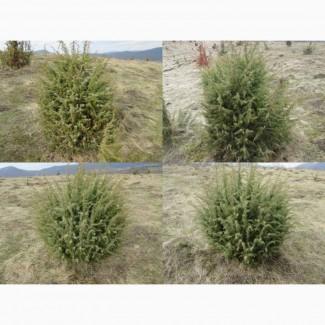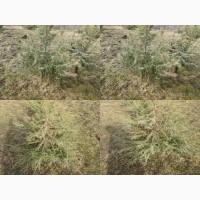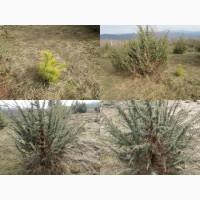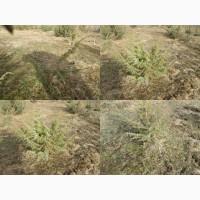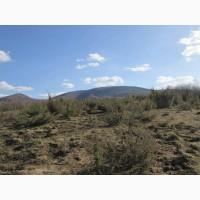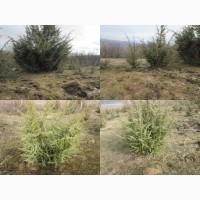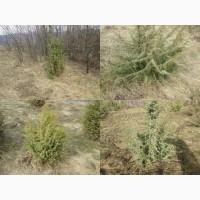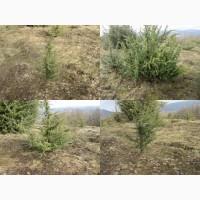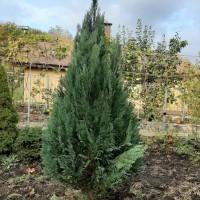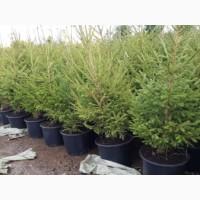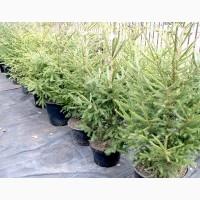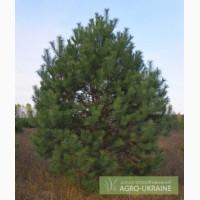/ Miscellaneous goods / Flowers, decorative plants / Seedlings of conifers / Seedlings juniper, Juniperus, heather, edible...
For sale / buy
Seedlings juniper, Juniperus, heather, edible, tree bush, Kiev region.
Price99 UAH.
Region:all of Ukraine,
Kiev region.
Updated :
Juniper common Juniperus, or heather saplings to order. Juniper grows in the ecologically clean area of the Carpathian Mountains, in the Turyan Valley, which is located near the Vygorlat Mountains of the Gutyn Range in the Transcarpathian Region of Ukraine. The juniper tree grew independently in the ecozone of the Carpathian Mountains, Turyan Valley, Transcarpathian Region. You can order the shape, height and structure of the seedling, after this the selected seedling is dug up and planted in a transportation pot for a survival test after transplanting, after the test period it is sent to the customer. Evergreen, it looks like a small cypress. This is a long-lived plant. In favorable conditions, juniper lives from 600 to 3000 years. Imagine that somewhere on Earth there are still plants that hatched from seeds a thousand years before the birth of Christ.
In Rome and Ancient Greece, this small cypress was considered a reliable remedy for snake bites. The Romans added crushed juniper berries to wine and drank it for liver diseases as a diuretic. In Ancient Russia, dishes were made from juniper bark. And the dishes did not spoil for a long time, and the milk stored in such dishes did not turn sour even on a hot day.
In Russia, juniper was considered a protection against evil spirits. Ego branches were consecrated in churches and placed behind icons, fixed under the ceiling.Juniper used to protect against all kinds of rain andcattle. And, if you think about it, it is more likely to be the unusually strong phytoncide properties of this plant.
Despite the fact that in ancient times nothing was known about bactericidal ether substances, juniper was used in household sanitation and folk medicine. The huts were fumigated with the smoke of dry juniper fruits, and the clothes of the sick were disinfected. In the sick person's house, the floors were wiped with juniper needles, they went to the bathhouse with juniper brooms, they steamed milk jugs and pickle tubs with juniper.
Because of its healing properties, longevity, and also because juniper wood does not rot, in some peoples this plant is a symbol of eternal life and overcoming death. Non-standard forms created in the wild are possible. After receiving the order, floor sizes, a photo of the plants will be provided
candidates for dispatch. After the customer has viewed the photo and selected the desired trees, the trees are dug up and sent by delivery service or another method. It is also possible to choose or order a forming crown for a specific landscape or room. Junipers are the strongest phytoncides that kill pathogenic microorganisms in the environment. This happens due to phytoncides released into the air and ether resins with a pleasant aroma. By planting junipers in the garden, you protect your health.
It will serve as an excellent decoration for rocky gardens and gardens in the oriental style, it can also be used as a ground cover plant, it will be an excellent choice for rock gardens, rocky gardens, and fixing slopes. It prefers sunny places, the crown can thin out in the shade. Undemanding to soil fertility and moisture. Frost resistant(//tractor-service.com)
Juniper is used in compositions, rock gardens or in single plantings. Soil and moisture requirements are small. It is used as a ground cover plant on slopes, retaining walls.
An evergreen shrub with a height of 1-3 m, a deciduous tree with a height of 8-12 m. The crown is conical or ovoid, in males it is narrower, in females it is more or less ascending or spreading, sometimes with branches hanging at the end. Coniferous berries containsugar (up to 42%), dyes, organic acids (formic, acetic, malic), resins (9.5%), essential oil (up to 2%) ), which includes the terpenes camphene, cadinene, terpineol, pinene, borneol, as well as trace elements (manganese, iron, copper, aluminum); in pine needles up to 0.27% ascorbic acid. Essential oils, resins, saponins, tannins and coloring substances are found in the roots. The plant has toxic properties, so overdose should not be allowed. The wood is solid. The sapwood is narrow, white with narrow annual layers. The core is grayish-brown with a matte shine. Annual layers are narrow, sinuous, well visible on all sections. The early part of the water layer abruptly transitions to the later part, which is poorly developed. There are no resin courses. Juniper wood usually has high mechanical properties.
Economic significance and application:
The plant is used as a decorative garden and park plant and in field protection forestry as a soil conditioner.
The wood is reddish with a pleasant smell, due to the small size of the tree, the wood has no industrial value. Fine-layered and dense, it is used for turning, carving, making toys and canes. Brown and red paints can be obtained from wood. Dry distillation of wood yields burnt juniper oil (lat. Oleum cadinum), which is used as an external distracting agent.
Resin gives sandarak and is used to make white varnish.
Juniper has strong phytoncide properties. For the treatment of tuberculosis of the skin, bones and joints, the Indians of North America placed patients in the thickets of this plant, where the air is saturated with volatile secretions.
In Rome and Ancient Greece, this small cypress was considered a reliable remedy for snake bites. The Romans added crushed juniper berries to wine and drank it for liver diseases as a diuretic. In Ancient Russia, dishes were made from juniper bark. And the dishes did not spoil for a long time, and the milk stored in such dishes did not turn sour even on a hot day.
In Russia, juniper was considered a protection against evil spirits. Ego branches were consecrated in churches and placed behind icons, fixed under the ceiling.Juniper used to protect against all kinds of rain andcattle. And, if you think about it, it is more likely to be the unusually strong phytoncide properties of this plant.
Despite the fact that in ancient times nothing was known about bactericidal ether substances, juniper was used in household sanitation and folk medicine. The huts were fumigated with the smoke of dry juniper fruits, and the clothes of the sick were disinfected. In the sick person's house, the floors were wiped with juniper needles, they went to the bathhouse with juniper brooms, they steamed milk jugs and pickle tubs with juniper.
Because of its healing properties, longevity, and also because juniper wood does not rot, in some peoples this plant is a symbol of eternal life and overcoming death. Non-standard forms created in the wild are possible. After receiving the order, floor sizes, a photo of the plants will be provided
candidates for dispatch. After the customer has viewed the photo and selected the desired trees, the trees are dug up and sent by delivery service or another method. It is also possible to choose or order a forming crown for a specific landscape or room. Junipers are the strongest phytoncides that kill pathogenic microorganisms in the environment. This happens due to phytoncides released into the air and ether resins with a pleasant aroma. By planting junipers in the garden, you protect your health.
It will serve as an excellent decoration for rocky gardens and gardens in the oriental style, it can also be used as a ground cover plant, it will be an excellent choice for rock gardens, rocky gardens, and fixing slopes. It prefers sunny places, the crown can thin out in the shade. Undemanding to soil fertility and moisture. Frost resistant(//tractor-service.com)
Juniper is used in compositions, rock gardens or in single plantings. Soil and moisture requirements are small. It is used as a ground cover plant on slopes, retaining walls.
An evergreen shrub with a height of 1-3 m, a deciduous tree with a height of 8-12 m. The crown is conical or ovoid, in males it is narrower, in females it is more or less ascending or spreading, sometimes with branches hanging at the end. Coniferous berries containsugar (up to 42%), dyes, organic acids (formic, acetic, malic), resins (9.5%), essential oil (up to 2%) ), which includes the terpenes camphene, cadinene, terpineol, pinene, borneol, as well as trace elements (manganese, iron, copper, aluminum); in pine needles up to 0.27% ascorbic acid. Essential oils, resins, saponins, tannins and coloring substances are found in the roots. The plant has toxic properties, so overdose should not be allowed. The wood is solid. The sapwood is narrow, white with narrow annual layers. The core is grayish-brown with a matte shine. Annual layers are narrow, sinuous, well visible on all sections. The early part of the water layer abruptly transitions to the later part, which is poorly developed. There are no resin courses. Juniper wood usually has high mechanical properties.
Economic significance and application:
The plant is used as a decorative garden and park plant and in field protection forestry as a soil conditioner.
The wood is reddish with a pleasant smell, due to the small size of the tree, the wood has no industrial value. Fine-layered and dense, it is used for turning, carving, making toys and canes. Brown and red paints can be obtained from wood. Dry distillation of wood yields burnt juniper oil (lat. Oleum cadinum), which is used as an external distracting agent.
Resin gives sandarak and is used to make white varnish.
Juniper has strong phytoncide properties. For the treatment of tuberculosis of the skin, bones and joints, the Indians of North America placed patients in the thickets of this plant, where the air is saturated with volatile secretions.
|
Author , contacts | |
Aleksey Anatolyevich / отзывы, инфо. / activity evaluation | |
|
Telephone:
+380xxxxxx
show
| |
ID объявления: #792937
(added by a registered user, registration date: 03-22-2018)
Added/Updated: 09-30-2024 06:16 (current, until: 30-09-2025)
Permanent ad address:
Showed / watched for today: ?, total: ?
Similar ads
Among them there are many interesting...
Filters: Juniper saplings
All Ukraine: Разные товары 18000 / Flowers, decorative plants 365 / Seedlings of coniferous plants 43
Kiev region: Разные товары 1304 / Flowers, decorative plants 20 / Seedlings of coniferous plants || |39710
